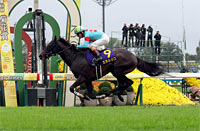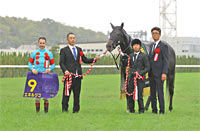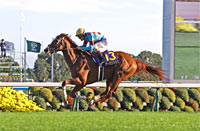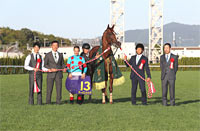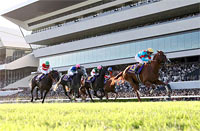2015 News
Data Analysis for the “2015 Kikuka Sho (Japanese St. Leger) (G1)”Third and final classic over 3,000 meters at “Yodo” (Kyoto Racecourse) This year’s final classic, the Kikuka Sho, is guaranteed to produce a maiden classic winner. That’s because Duramente, winner of both the Satsuki Sho (Japanese 2000 Guineas) and the Tokyo Yushun (Japanese Derby), has pulled out due to injury. So – will one of the spring’s form horses underline its A-list credentials this year? Or will a newcomer rise to snatch the spoils? To look for the answer, let’s dig out some trends in this race from results over the last 10 years. Dominance of the “Kobe Shimbun Hai” group First, let’s look at aggregate performances over the last 10 years in terms of the runners’ previous race. This reveals that nine of the 10 winners and 16 of the 20 top 2 finishers in that period had most recently competed in the “Kobe Shimbun Hai” trial. In terms of success ratios, too, the Kobe Shimbun Hai group is overwhelmingly superior to runners coming straight from other races. On the other hand, horses most recently seen in another trial, the “St. Lite Kinen”, tend to struggle, with a top 3 ratio of only 8.7%. The runners’ previous race is something we need to check. [Table 1] [Table 1] Performance by previous race (last 10 years)
Check finishes in turf races over 2,200m or more Turning next to performances by runners over the last 10 years by their finish in the most recently contested turf race of 2,200m or more, eight winners and eight runners-up had finished in the top 3 in that race. As this will be the first 3,000m turf race experienced by any of the runners, it should be worth checking if any of them have a good record in middle-distance turf racing. [Table 2] [Table 2] Performance by finish in most recently contested turf race of 2,200m+ (last 10 years)
Look for top 2 finishes in the last three outings If we check the number of top 2 finishes in turf races within the previous three outings by runners over the last 10 years, we find that all 10 winners had finished 1st or 2nd in turf races at least twice within their previous three races. Although five of the runners-up in this race had only one or no such finish in that period, there is a clear difference between the two groups (those with two or more and those with one or fewer) in terms of success ratios. So we should also check the number of top 2 finishes in recent races. [Table 3] [Table 3] Performance by previous race (last 10 years)
Experience of racing in spring classics? A look at performances by runners over the last 10 years in terms of their highest finish in the Satsuki Sho or Tokyo Yushun shows that those with a best finish of “1st” or “2nd” there have scored a high top 3 ratio of 42.9% in this race. We should certainly keep our eye on the top 2 finishers in the two spring classics. But the top 3 places in this race have been shared equally (15 times each) by horses with experience of contesting the Satsuki Sho or the Tokyo Yushun and those with no such experience. So we should not underestimate horses that have begun to show their mettle since the summer. [Table 4] [Table 4] Performance by highest finish in the Satsuki Sho or Tokyo Yushun (last 10 years)
Seek out the winner! All five winners since 2010 had finished “in the top 3” in every race contested since August in the year in question. Runners that have avoided big defeats in any race since August could well be worth a punt. [Table 5] [Table 5] Winners’ performance since August that year (last 5 years)
(Data analysis by Michio Kawano) |

|















